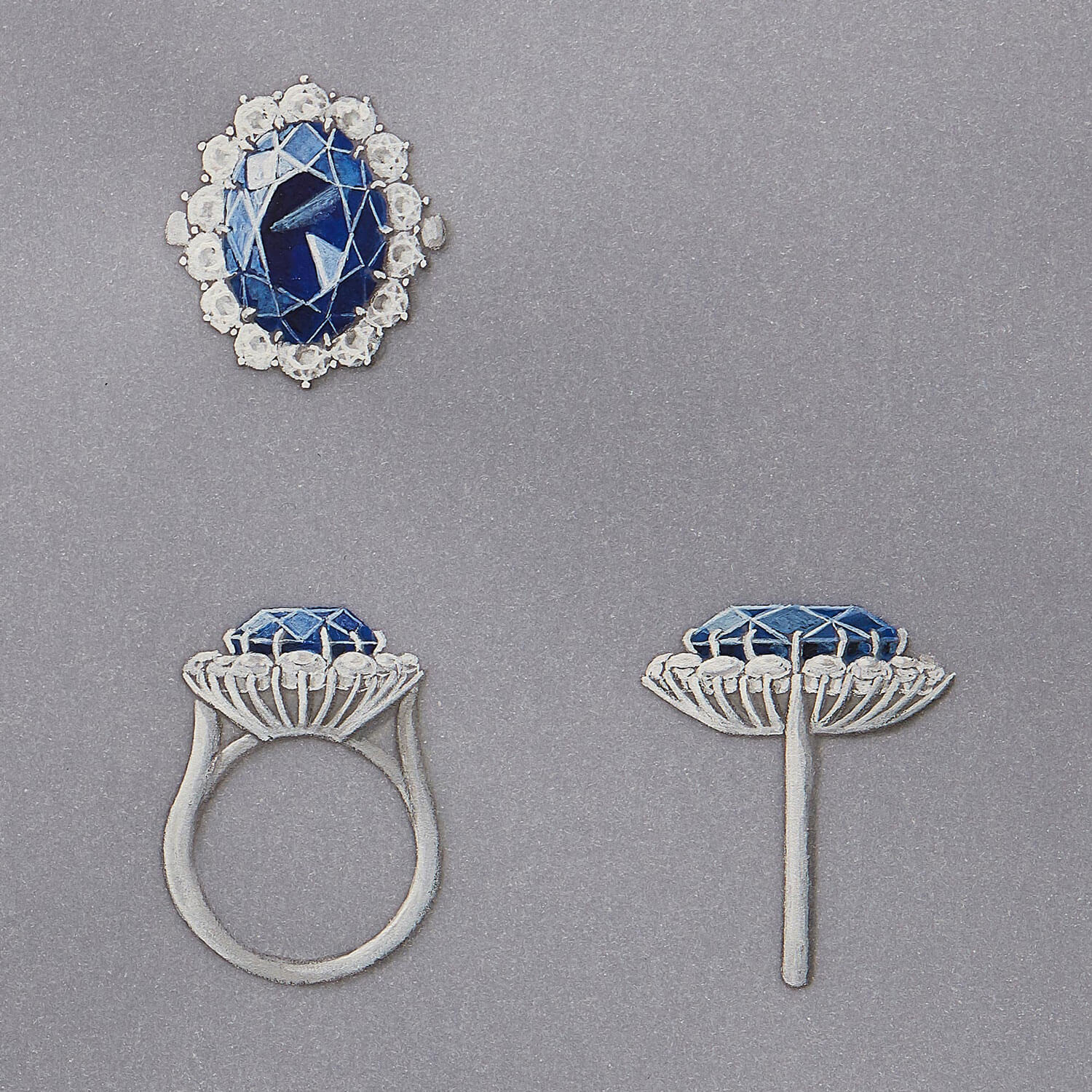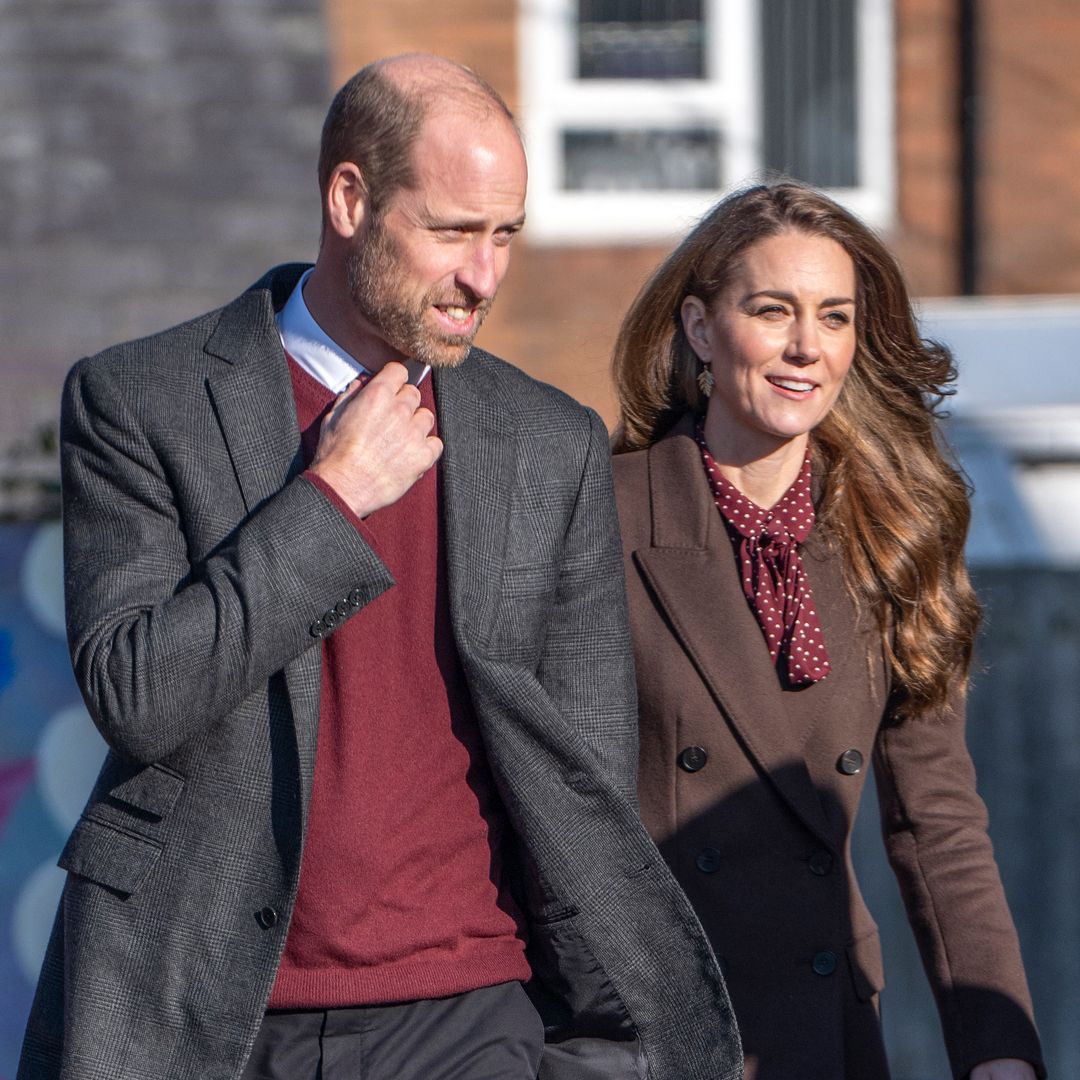The Ring the Queen Disliked — How Diana’s “Common” Sapphire Became the World’s Most Iconic Jewel

It’s one of the most recognizable engagement rings in history — a brilliant blue sapphire surrounded by fourteen diamonds, set in 18-carat white gold. But when Prince Charles proposed to Lady Diana Spencer in 1981, that glittering symbol of love didn’t exactly dazzle Queen Elizabeth II.
In fact, the Queen reportedly disliked it.
💍 The Proposal That Shocked Tradition
Charles and Diana had met barely a dozen times before their engagement. He was 32, seasoned, and cautious. She was 19 — shy, romantic, and utterly unprepared for what lay ahead.
When the time came to propose, Charles did something unusual for a royal: he let Diana choose her own ring.
At a private appointment with the royal jeweler Garrard
To everyone’s surprise, that was the one she picked.
It wasn’t the most expensive ring on the tray. Nor the grandest. But there was something about that deep blue stone that spoke to her — elegant, emotional, timeless.
👑 The Queen’s Quiet Disapproval
In the eyes of the royal family, however, Diana’s choice was… problematic.
Every engagement ring before hers had been custom-designed, a one-of-a-kind piece created exclusively for the bride-to-be. But Diana’s sapphire wasn’t bespoke. It was available straight from Garrard’s catalog.
In theory, anyone with enough money — roughly £47,000 at the time (about $660,000 today) — could buy the exact same ring.
To the Queen, this wasn’t just a breach of taste — it was a breach of
It wasn’t snobbery so much as symbolism. To the Queen,
But to Diana, that sapphire wasn’t about heritage. It was about heart.
💙 What the Sapphire Meant to Diana
The sapphire’s blue matched her eyes — something Charles reportedly noticed with approval. But for Diana, the ring represented something deeper.
In a world of rigid rules and inherited jewels, she had chosen
It was one of the first decisions she ever made as a member of the royal family — and, ironically, one of the last she would make without scrutiny.
The ring’s sparkle became inseparable from her image. Every time she waved, hugged, or wiped a tear, the sapphire flashed — a symbol of both her glamour and her isolation.
💔 A Symbol of Love — and Loss
As her marriage to Charles unraveled, the ring took on new meaning. It became a haunting reminder of a fairytale that had crumbled behind palace walls.
When Diana died in 1997, her personal effects were divided between her sons. Prince Harry reportedly inherited the ring, while William received her Cartier watch — but in a moment of brotherly love years later, they exchanged mementos.
Because when William met Catherine Middleton, he wanted her to have his mother’s ring — not for its monetary value, but for its memory.
“When I gave it to Kate,” he once said, “it was my way of making sure my mother didn’t miss today and the excitement of us spending the rest of our lives together.”
💫 The Ring’s Second Life
When Catherine appeared with the sapphire on her hand in 2010, the world gasped. It was as if Diana’s spirit had returned — the same ring, the same grace, now reborn in a new generation.
This time, even the Queen couldn’t disapprove. The ring had transcended protocol.
What was once “common” had become sacred.
The stone that once symbolized a young woman’s innocence had transformed into a symbol of continuity — of loss, healing, and the enduring strength of love.
🔹 The Irony of History
It’s almost poetic: the ring the Queen once frowned upon is now the most photographed jewel on Earth.
It has graced magazine covers, inspired replicas, and become a global icon — not because it was rare, but because it was
It wasn’t born of aristocratic perfection. It was chosen by a girl who followed her heart, not a protocol.
And maybe that’s why, decades later, it shines brighter than ever — not just as a gem, but as a reminder that even in the most gilded cages,
Catherine vs. Camilla: The Defiance That Shook the Crown


The world gasped when Princess Catherine, long celebrated as the picture of royal grace, delivered a refusal that rattled Buckingham Palace to its core. She would not attend another royal or state event until Queen Camilla issued a public apology.
It was more than absence. It was an ultimatum. And for a monarchy built on silence, duty, and deference, Catherine’s defiance was a thunderclap.
A Silent Strength Turns Defiant
For years, Catherine had been admired for her poise under pressure. She carried herself with elegance through scandal, gossip, and endless comparison to Diana. To the public, she was stability itself—the steady hand in a family often torn by drama.
But this moment revealed something few had seen before: Catherine unyielding, unafraid, unwilling to bend. The very idea that a future queen consort would defy the reigning queen sent panic through palace corridors. Courtiers scrambled, aides drafted denials, but the truth could not be hidden.
Her absence was louder than words.
The Insult at Windsor
The spark, insiders say, was lit at what should have been an ordinary family dinner at Windsor. The silver gleamed, the wine was poured, the tone was polite—until Camilla spoke.
With a smile sharp as glass, the Queen Consort remarked on Catherine’s “unearned influence.” A phrase delivered softly, but cutting like a blade. The table fell silent. William’s jaw clenched in fury, but he said nothing. His silence was restraint. To Catherine, it felt like abandonment.
In that instant, Catherine was reminded not only of her own critics, but of Diana. The parallels were unmistakable. Diana too had been undermined by whispers of unworthiness, diminished in the very family she had married into. Now history seemed to echo.
A Marriage in the Crossfire
For William, the moment was devastating. He had sworn never to let history repeat itself, never to allow Catherine to suffer as his mother had. But now he found himself torn between two loyalties: crown and wife, duty and love.
Every second of his hesitation was judged. To the public, his silence looked like wavering. To Catherine, it looked like betrayal. The fracture widened.
Behind closed doors, Catherine’s words to her husband were fierce:
Camilla’s Fury
Camilla, blindsided by Catherine’s stand, was incandescent with rage. To her, the throne had been fought for, earned inch by inch through decades of scorn. To yield—even slightly—would invite weakness.
“She will learn her place,” she reportedly snapped behind palace doors.
But those words betrayed fear. For if Catherine could shake the monarchy with absence alone, what else might she do?
A Stand Years in the Making
To paint this rupture as one dinner’s fallout would be a mistake. For Catherine, Camilla’s barb was the final straw in years of slights. Patronages quietly redirected. Jewelry of Diana withheld. Subtle erasures of influence. Whisper campaigns in the press.
Each humiliation endured with silence. Until now.
Catherine’s refusal was not reckless defiance—it was survival. A declaration that she would not be diminished again.
Diana’s Ghost Returns
The media wasted no time drawing parallels. Images of Diana resurfaced, side by side with Catherine. Headlines declared Catherine the “true heir to Diana’s legacy.”
Suddenly, her absence became symbolic. She was no longer just a consort demanding respect. She was Diana’s voice resurrected, refusing to be silenced a second time.
Crowds gathered outside royal residences with signs of support. Hashtags praising Catherine surged across social media. The public saw not arrogance, but courage. Every empty seat at every royal event became a protest, a reminder of dignity withheld.
Camilla Strikes Back
The Queen Consort fought back the only way she knew—through influence. Loyal allies in the press began planting stories painting Catherine as unstable, reckless, unfit. But the campaign backfired. The nation had chosen its side, and sympathy tilted to Catherine.
Each attack only strengthened her in the eyes of the public. Her silence was seen not as weakness, but as resolve.
A Crown Divided
Inside Buckingham, chaos reigned. Calendars fell apart, charities scrambled, foreign dignitaries questioned the monarchy’s stability. For Charles, the situation was unbearable. Torn between his wife and his son’s beloved, he stood paralyzed.
Advisers whispered of collapse. Politicians quietly pressed for resolution. The monarchy itself looked fragile, teetering on the edge of crisis.
The Ultimatum
And then came Catherine’s vow. No return, no appearances, no compromise—until Camilla apologized publicly.
It was not negotiation. It was war.
For Camilla, to apologize would mean surrender, a permanent crack in her crown. For Catherine, silence was no longer survival—it was power.
The monarchy, long a symbol of order and obedience, now faced a showdown between its present queen and its future one. The world watched, breathless.
A Battle for the Monarchy’s Soul
What began as an insult at dinner had erupted into a generational battle, a clash of dignity versus pride, history versus ambition.
Catherine’s absence is no longer absence. It is protest.
Camilla’s silence is no longer strength. It is weakness.
And William stands torn between the two, haunted by the shadow of his mother.
The question now is stark, unescapable:
Will Camilla bow—or will Catherine walk away forever?
Because this is no longer just a feud. It is a battle for the very soul of the monarchy.












